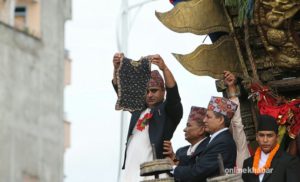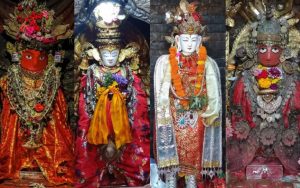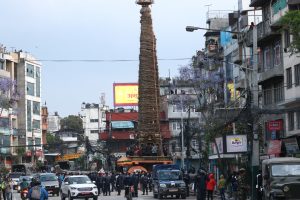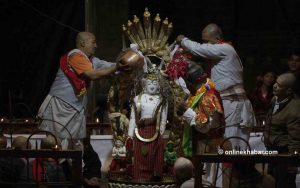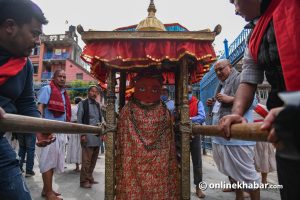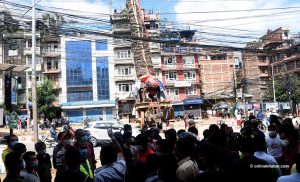The annual bathing (snan) ritual of Seto Machhindranath is being held at Janabahal of Kathmandu today.
The ritual is held every year on Poush Shukla Ashtami (the eighth day of the waxing moon in the month of Poush).
This annual affair is celebrated till the full moon exactly a week away. In the weeklong festival, several other activities are also incorporated, closely resembling the primary rituals that one has to go through in life.
The process
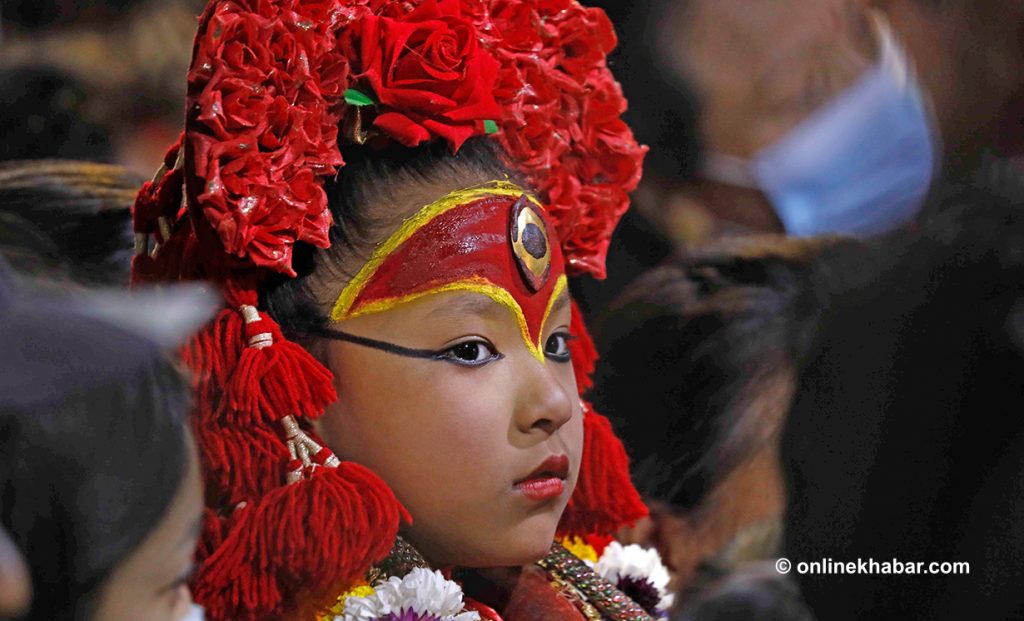
To observe the ritual, hundreds of people gather inside the premises of the Kanak Chaitya Mahavihar. This includes the living goddess Kumari, who makes her presence to observe the whole ritual.
After Goddess Kumari reaches the temple, the main priest of the temple carries the deity out of the temple and establishes onto the platform made for the ritual.

They also take out smaller deities, Green Tara and White Tara, and put them on either side of the deity. Green and White Tara are said to be the children of Seto Machhindranath aka Janabahaa Dya:, Aryaavalokeshwar or Karunamaya.
Once on the platform, other priests dressed as Panchabuddha perform commencement ritual. Then, the main priests start taking off the clothes of Seto Machhindranath and the two smaller deities, for the bathing ritual. During this, devotees can be seen counting how many clothes they take off.

After the clothes are taken off, two priests on either side of the deities hold up an earthen pot, each filled with cold water. The water used for the ritual is brought a day before by mainly the priest and male members of the Mahabihar from Bhachakhushi of Shova Bhagwati.

Other priests present in the platform perform rituals, after which the two priests pour the water, mixed with milk and ghee, over the deities. During this, a group of musicians also play traditional instruments, Nya baja, Dhime baja, etc.
They repeat the same process two more times. And, for the fourth time, they do the same with hot water poured by the main priest.
Once the ritual is over, the priests wrap all deities in clothes and take them inside the main temple, but do not reinstate them to their original place.
Following the bathing ritual
Next morning, they take the deities out in the bahal for them to sunbathe. On the day, the priest paint idols of Seto Machhindranath and White Tara all white whereas the Green Tara is painted all green. Till the full moon, the priests continue to paint the idols and add details on them. This is the only time the two smaller deities are shown to the public.
On the last day, they paint the eyes and cover them with Nepali kagaj (paper). They also decorate their feet with alah (red colour), a ritual followed by women of the family during puja or festivals.
Before taking the deities inside the temple, the priests also perform a series of other rituals. The deity is believed to be both male and female, so the priests perform all rituals from their birth, followed by both the genders.
The face of the deity is uncovered as a symbol of being born. After that, they distribute ghya-chaku (ghee and molasses) and palu (ginger). After this, they perform janku (rice-feeding) ceremony where they distribute charu jaa (rice made with panchamrit including ghee, milk, molasses, dry fruits, etc.) They also perform ih: or bel bibah, and bara: or gupha as well as bratabandha: for the deity as a coming-of-age ceremony performed for both adolescent girls and boys. The priests adorn the deity with new clothes and pieces of jewellery.
Finally, the deity is reinstated to her position inside the temple and as a welcome ceremony of a new bride, they also distribute sa-bhojan with 32 (side) dishes.
From the archive.





